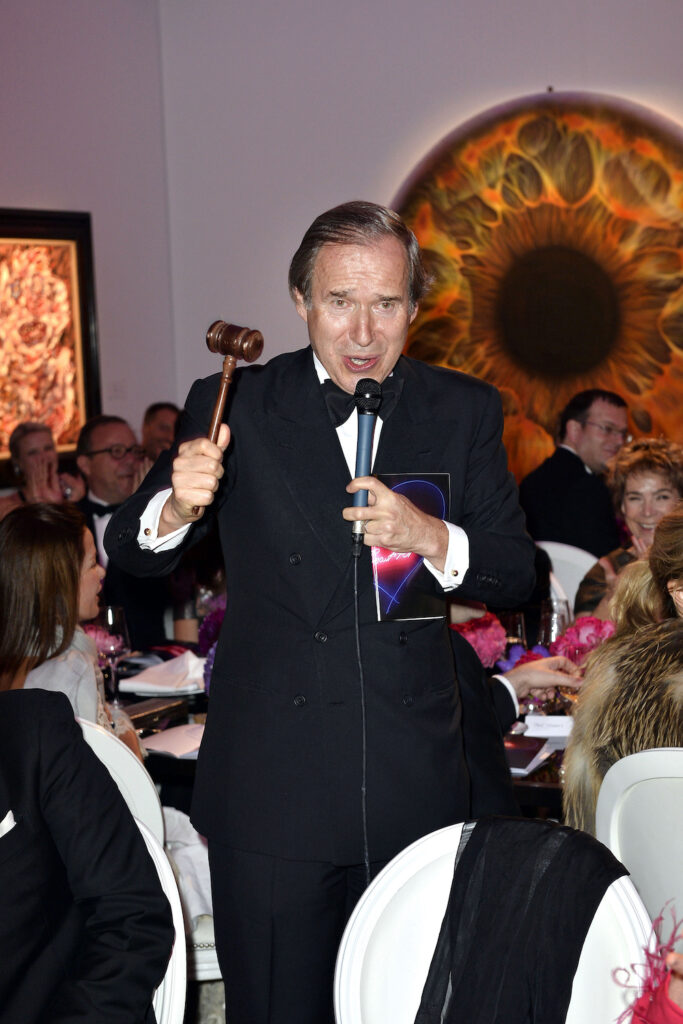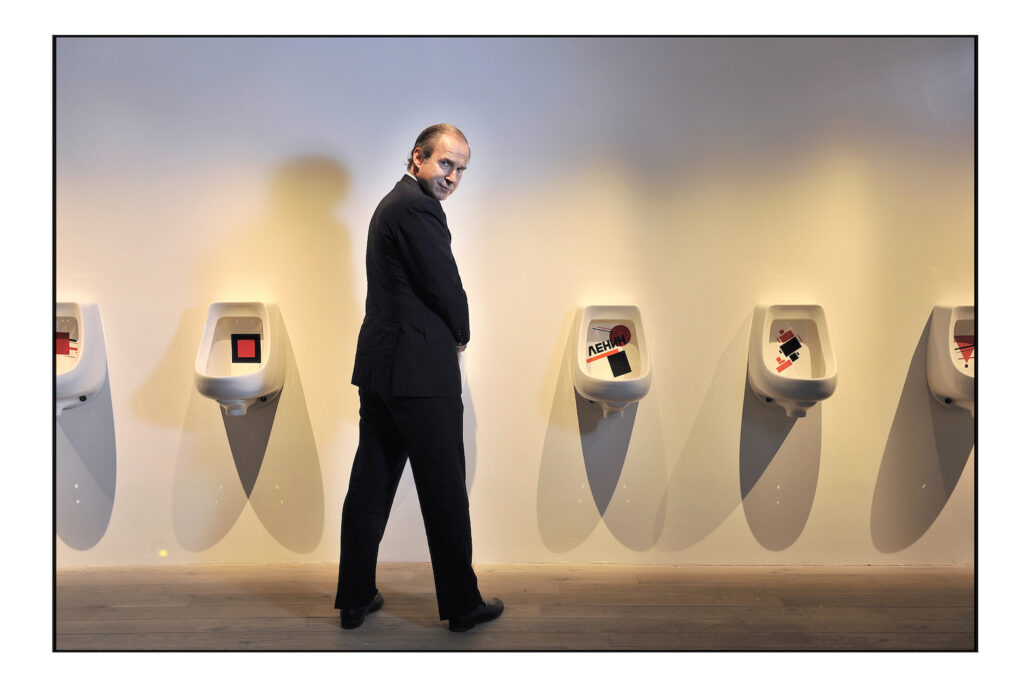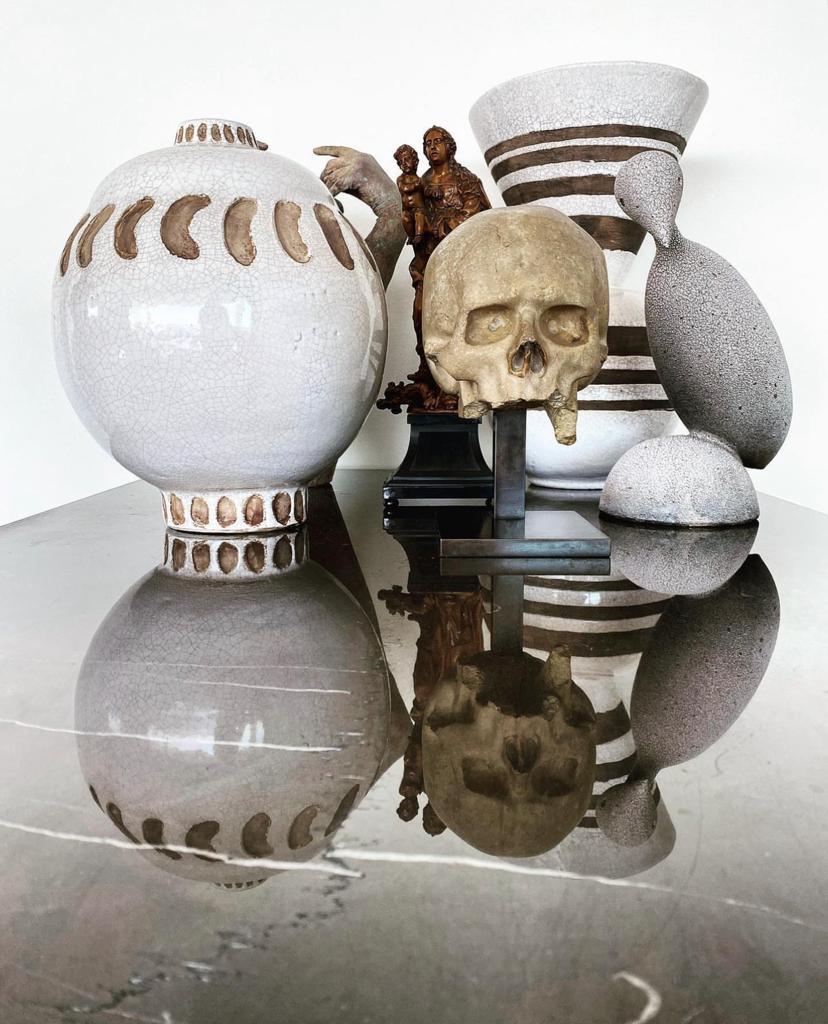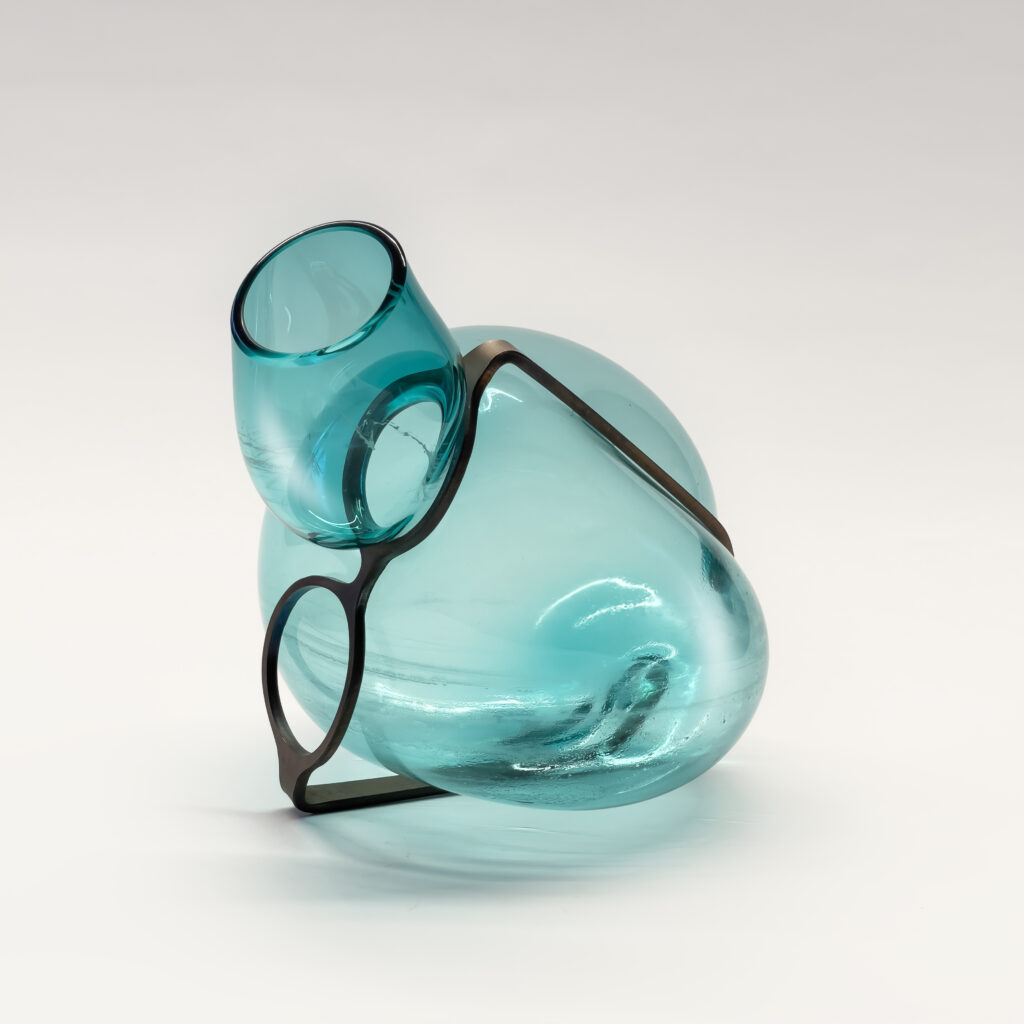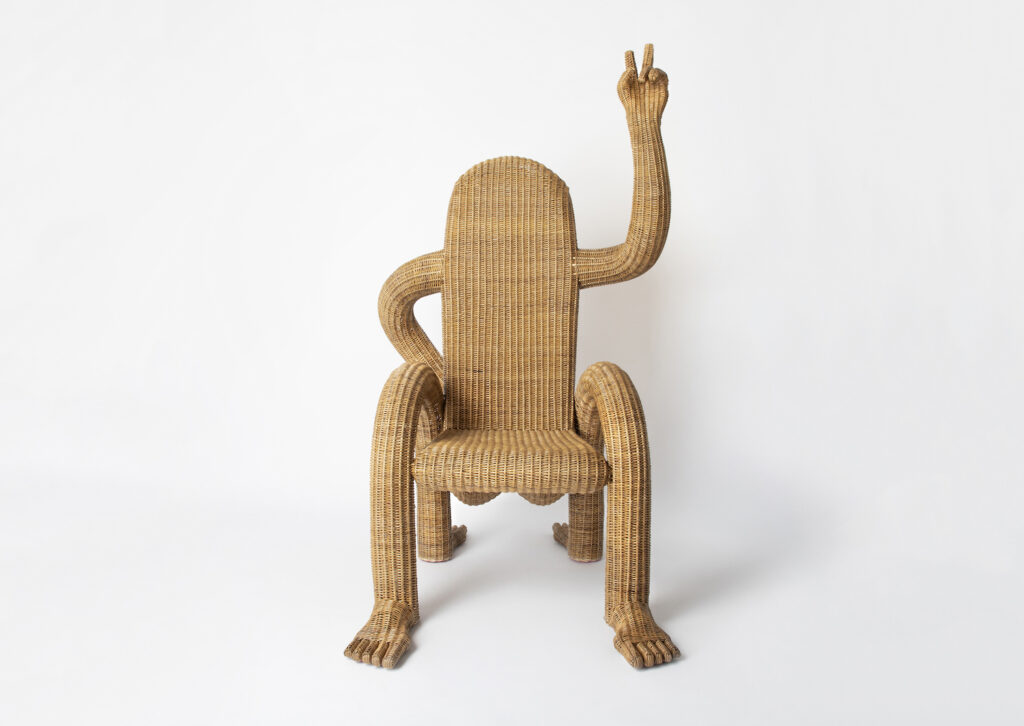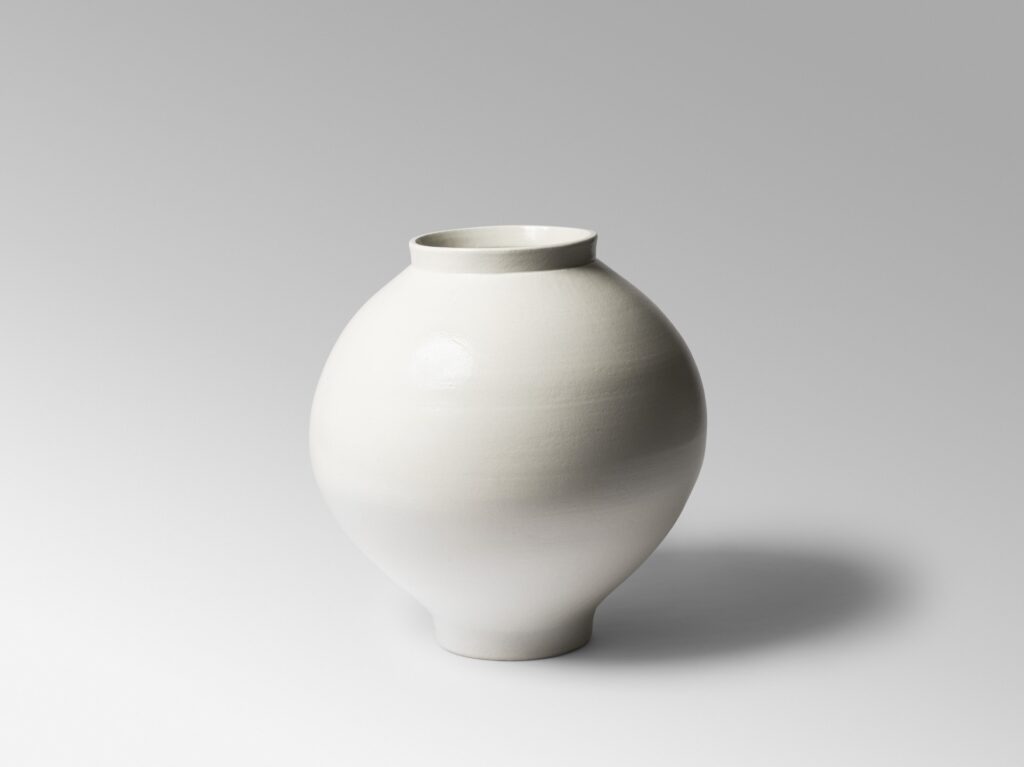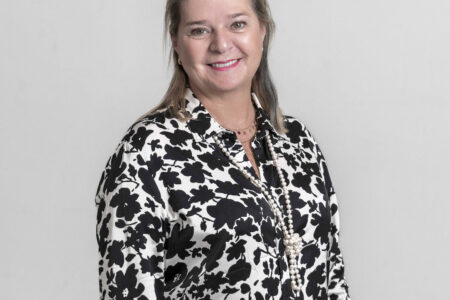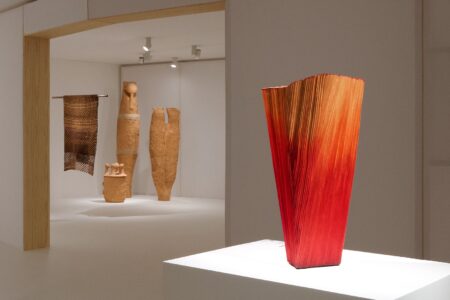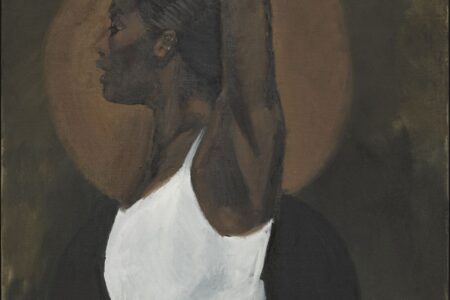The Energetic Appeal of Objects
For our 2023 issue: TLmag39: The Culture of the Object, legendary auctioneer and art world figure, Simon de Pury, writes an engaging essay about the mysterious and intuitive appeal of objects, which doesn’t necessarily stem from their value but from something deeper.
When we speak of an object, we think of a three dimensional work that we can not only see from every angle but which we can also touch or even take into our hands. Its aesthetic appeal can be due to its shape, form and line as well as choice of materials. The tactile experience enhances our sensory relationship with the object. Even its temperature will subliminally impact our attraction to it. I have always been intrigued how curators, experts or art lovers touch an object. The way they handle an object actually tells you everything you need to know about their degree of understanding of it. An object can be a work of art that was created with- out any functional purpose – such as a sculpture – or it can be an example of exquisite craftsmanship with a distinct function such as a piece of furniture or a vase or a working tool.
When a dog owner wants to have another opinion on a friend or potential business contact of theirs they get the best imaginable advice by simply observing the initial interaction between their dog and that human. The dog will instantly express her or his liking of that person or, on the contrary, their highly audible dislike. We humans are equipped with the same faculty to instantly judge the intentions and the characters of the people we meet for the very first time. However, our mostly rational approach to life prevents us from listening enough to our deepest intuitions. In my many years of activity in the art world I have conducted endless interviews to hire colleagues for all sorts of job vacancies or newly created positions. Usually, my opinion on a candidate is already made before we exchange any words. If that opinion happened to be negative, I always found it very painful having to sit thru the whole interview and go through the motions out of sheer politeness since my opinion was already made. It could occasionally happen that a candidate succeeded in making me change my prejudice but in most of these cases, after a while of working with them, I would sadly always revert back to my initial reaction. Now what is it that all this is supposed to have to do with my relation- ship to objects? Works of Art or any objects of curiosity are all inanimate and yet they provoke in me an equally instantaneous attraction, indifference or repulsion. These reactions cannot be based solely on aesthetics as part of a permanent quest of beauty and harmony. I may arrive in a place decorated with exquisite taste and yet feel deeply uncomfortable and ill at ease. Or vice versa; I can arrive at a place that wasn’t arranged with any sense of refinement and yet feel total serenity and well being. It’s these thoughts that bring me to the conclusion that just as it is between living creatures, inanimate objects emit energy and react to energy. The desire to collect is built in us from childhood onwards since as kids we collect marbles, shells, miniature cars, barbie dolls or anything else. When at an adult age we resume with collecting, spending financial means that in most cases get close to their limits or sometimes beyond, we use this instant attraction or discernment. When as a collector I hesitate to acquire an object, it can only mean one thing: I should definitely not go for it. The energy that draws me to it is simply insufficient and will never ever give me long lasting contentment. In the same way that we may feel irresistibly attracted to a human, we feel as collectors that we simply have to acquire a given object or work of art and can’t con- template life without it. We often think that we master these emotions and that they are entirely generated by ourselves. But are they really? Even if – thanks to technology – we live in times of constant reachability, there is still today no more reliable and stronger way of communicating than through telepathy. Business wise, so often when I absolutely wanted to achieve something, all avenues would block themselves and the goal would become unattainable. On the contrary, when I would let go, suddenly everything would fall into place. I can remember arriving in New York thinking I should prepare a list of all the people I should contact. Then for whatever reason including laziness, I didn’t. If I was feeling in tune with myself, I would sit in the lobby of the Mercer Hotel and think of a few people and by total miracle they would suddenly appear in the lobby. An accidental encounter would be far more effective than a premeditated planned and scheduled one. Energy never just flows in just one direction. It’s when it flows both ways that it’s the best. If we are suffering from a personal relationship gone awry and feeling miserable for ourselves we can be in a room filled with the most attractive, smartest and desirable human beings and nothing will happen since we block ourselves. Equally if we have just experienced moments of personal bliss we can go into that same room and the energy we will emit will open up so many opportunities that we will be so overwhelmed that we won’t know which ones to pursue at all. These observations on myself and others lead me to believe that very often when a collector believes they chose a painting or any work of art it is actually the other way round.
A dear old friend, Rolf Weinberg, a highly sophisticated collector with an excellent and very eclectic eye, who sadly left us last year, told me the following story. One day he went to see an exhibition at the Kunsthaus Zurich and had a ‘coup de foudre’ i.e. he fell madly in love with a painting that was in that show. He asked the Director of the Kunsthaus to divulge the name of its owner. The Director told him he was not allowed to do this but that Mr. Weinberg should write a letter to the anonymous owner that the Director would then forward. He followed exactly that advice and wrote an enthusiastic letter to the unknown owner, telling him that he was so keen on his painting that he was prepared to make him an offer that he would find difficult to turn down. The letter had no effect since the years passed without Rolf Weinberg ever getting a response and not finding out the identity of the owner of the coveted work. Circa ten years later Rolf Weinberg was in another European city when suddenly a strong rainstorm started. He was standing near a high end jewellery shop and decided to go inside to wait for the rain to stop. While admiring the exquisite jewellery, he began a conversation with the owner of the shop. The jeweller asked Weinberg where he came from. When Weinberg responded Zurich, the jeweller told him that he had once exhibited a work from his private collection at the Kunsthaus and that a local collector had written to him expressing an interest to acquire it. When the two men realized that fate had brought them together accidentally they were both so stunned by the circumstances that they determined it was a sign not to ignore and they negotiated the private sale of the painting in question.
During the sixteen years that I spent working for Sotheby’s, I was very proud one day of having secured the consignment of a magnificent Willem de Kooning belonging to a distinguished Greek private collector who had it hanging in his chalet in Gstaad. It was determined that New York was the right place for this top quality work to be sold at auction. We arranged for the work to be collected by the best professional art handlers in the Gstaad chalet and to be shipped in the safest possible way to the New York sale room of Sotheby’s on York Avenue. As was to be expected for a work of that calibre there was heated competition. The winner of the bidding turned out to be a German collector who asked for his purchase to be shipped to his own chalet in Gstaad that was situated less than 100m away from where the Greek collector was living. Despite living so closely to each other the new owner of the work had never met the former owner and more importantly had never seen the painting before. Clearly energetically the artwork felt well in that part of Gstaad and wanted to go straight back to where it had already spent many happy years.
At this point, after having read these lines so far, you must think that its writer must be a certified basket case and you may of course be totally right. Collecting is a totally incurable disease that has as many different motivations as there are collectors. Its multiple manifestations have been described by col- lectors and in the memoirs of art market professionals over the years. Werner Muensterberger is to my knowledge the only top psychoanalyst who has examined it from the perspective of his practice. He wrote the book “Collecting: An Unruly Passion”. He knew very well what he was talking about since he himself suffered from the same illness, as a collector of African art. Objects, like human beings, have their own lives, fates and destinies. I love reading memoirs or biographies of people who have achieved exceptional things during their lifetimes. The duration in time of a work of art is also limited but normally infinitely longer than that of a living creature. My dream has always been to relate more in documentary film form rather than in a literary way the ‘biographies’ of some of the most significant or expensive paintings, works of art, jewels, cars or watches ever sold. Just as with humans, their life spans are marked by history, passion, happiness, sadness, sex, scandal, deceit, murder, war and peace. A former girlfriend, knowing of my fascination for the spiritual and the occult, once gave me a crystal ball that had been used by a fortune teller, and which she found in an antiques shop. It was a very beautiful object and a most thoughtful present. Yet the minute I set eyes on it I felt distinctly uncomfortable with the energy emanating from it. So much so that regardless of its potential monetary value I felt that I had to get rid of it as soon as possible. I didn’t want to have any of my loved ones be exposed to its most unsettling energy. There is no human being with whom I dis- like so much as to pass on this present. I did not want to try to sell it nor give it to anyone. So, I packed the crystal ball in a piece of cloth and went to a large apartment building in London and dropped it into a large rubbish container. I knew that a van of rubbish collectors would collect it in the early morning hours of the next day and that it would end up broken with all of the other rubbish and that its negative energy couldn’t harm anyone. I am still very fond of the lady who gave it to me. I hope she will not read these lines and in any case it’s the thought that counts and I know that she was not ill intentioned.
A not too dissimilar story had happened to me many years earlier with an absolutely fascinating lady whose collection had been sold with immense success at auction. To express her gratitude to me she very generously gave me a ceramic object of a cat that was lying on her concert piano. Its financial value was very limited – to put it mildly it was in auctioneer’s jargon n.s.v. (no sales value). While I was extremely fond of the lady, the object in question emanated infinite sadness and a feeling of tragedy. I did not want to insult her by turning down her present but as in the case of the crystal ball packed it in a cloth and this time put it in a rubbish bin about to be collected in Geneva.
The two examples above are, I must admit, quite extreme and completely exceptional. In the same way that I absolutely love humans and thank my lucky stars for exercising a profession that allows me to constantly meet a lot of people, it is my all-consuming passion for art that is not only at the basis of the choice for my profession but is the engine that propels me on a daily basis. Thanks to my job as an auctioneer, I am in constant contact with hundreds or thousands of works of art and the two examples above are the only time that I felt compelled by the nefarious energy of the works in question to take such drastic action.
There are houses that are said to be cursed and where every subsequent owner had to endure the horrible consequences of owning them. The Hope diamond is possibly the most famous cursed diamond in history. It is said to have contributed to the death in horrible circumstances of most of its owners.
Nevertheless, how is it that we cannot notice when something is potentially bad for us? I love to sit in a restaurant or a Parisian open air cafe and observe the people around me. I could describe quite accurately what makes them tick or what is working or not in their couple. It is precisely the fact that I don’t know them at all that allows me to form such an exact picture of their lives. As soon as I know a person better, and especially if there is a physical attraction that mud- dies the waters, I lose any sharpness of judgment and I can become totally blind to the less pleasant aspects of the energy they emanate. Being a sponge, I can then literally fill myself with all that negative energy. For objects, it is the familiarity with them that robs us of discernment. When I think of the artworks and the objects I saw at my parents while growing up, it is that familiarity which gives them immense sentimental value, but it is that closeness that at the same time makes it more difficult to judge them for their intrinsic merits or lack thereof.
I have always been fascinated by Steve Wynn and his incredible success story. He first appeared on my radar in the mid 1990’s when after having become the undisputed global king of casinos he started to build a phenomenal art collection. Bill Acquavella played a key role in helping him to achieve this. However, it is Steve Wynn’s all devouring passion for art coupled with profound knowledge and a unique business acumen which made him build one of the finest private collections in the world. Over the past three years I have been privileged to get to know him better. I could literally listen for hours to his detailed stories relating to every single art acquisition he has ever made. The fact that he also happens to be one of the best raconteurs ever certainly makes it even more riveting. He suffers of a degenerative eye disease which makes him nearly totally blind. Nevertheless, he gives a better guided tour of his art holdings than nearly any collector I know. He can describe in minute detail any work in his collection, any work he has ever owned or any work that he covets. He also occasionally touches some of his artworks and can judge the thickness of the paint of each brush- stroke. He is imbued of the energy of the masterworks that surround him and he lives in much closer symbiosis with art than some collectors who are blessed with much better eyesight. Over the years, he has become a supreme connoisseur. This comforts my belief that our relationship to works of art and objects goes way beyond their simple visual perception.
The pandemic has been a major test for the art world in general and the art market in particular. Initially, not only was most of the global population locked down, but the artworks themselves as well. All art warehouses were closed and even in the case where a transaction would have taken place the works of art themselves could not have been moved from A to Z. Things improved quite rapidly. The market that had resisted technological innovations for years was forced to adapt very quickly. Online auctions rapidly demonstrated that a brisk market could take place without the works being physically seen prior to the auctions. It also was shown that the market could move away from its seasonality and could potentially morph into a 24/7 platform.
Can all the supra natural phenomena that I described in the first part of my article happen when there is initially no physical contact at all between artworks and their potential acquirers? I am emphatically convinced that yes. A mother can be separated from her child and be geographically apart at two extremities of the globe, yet if an accident should happen to the child there is a strong likelihood that the mother will feel it in herself. Looking at a photograph of someone, looking at the traits of the expression of a face can awake emotions in us that can be nearly as strong as when we are physically in front of that person. This of course applies to objects and works of art as well.
The pandemic or at least the health restrictions imposed on us as a result appear mostly behind us. The art world and art market has to a large degree retreated to pre Covid habits.
Nevertheless, things will never quite be the same again. I have tried to develop a primary market auction system that allows an avatar of myself to conduct online auctions in real time. The works of art are moved only once after the auction when they are being shipped from wherever they are with the artists or the galleries representing them to wherever the purchasers are based. This has the double advantage – from an environmental point of view and from a cost point of view. A far more efficient auction model should over time drastically reduce the currently far too elevated commission rates by the main houses in the price segment between $10k and $3m. This in turn will massively increase the number of people participating directly in the market.
As an auctioneer who has conducted auctions over more than five decades now, the differentiating factor very often has been the capacity to project excitement and create a positive energy that would entice people to bid more in a live context. Online auctions so far were just showing numbers going up on a screen. Whoever will be best at translating the excitement and energy of a live auction to an online one will have a massive growth potential. AI will be invaluable in achieving this. So far, I have to put on a very uncomfortable space suit and wear a helmet that films my every movement that then gets replicated in real time by my avatar. My hope is that reasonably soon I can lie under some coconut trees and that my avatar will be able to convey maximum excitement while conducting endless auctions by itself.
I have started by creating themed primary market auctions such as WOMEN! – Art in Times of Chaos, CREATE! – 21st Century Architecture & Design and FIRE! – Contemporary Glass & Ceramics. These sales are novel in more ways than one. First of all, they are primary in the sense that the works are consigned directly by the artists themselves. They, as well as the galleries representing them, are the prime beneficiaries. 3% of the total raised by all sold objects goes to a charity that is linked to the theme of the auctions. This is just the start of vast changes that the art market will experience over the coming years. Success will smile on those who will be able to convey the magical alchemy that happens when art lovers and collectors are fully attuned energetically to the objects and art works they desire.
www.de-pury.com
@simondepury
